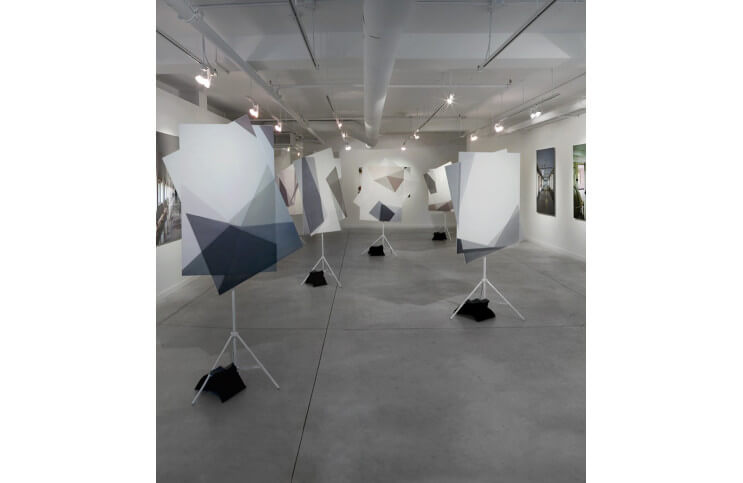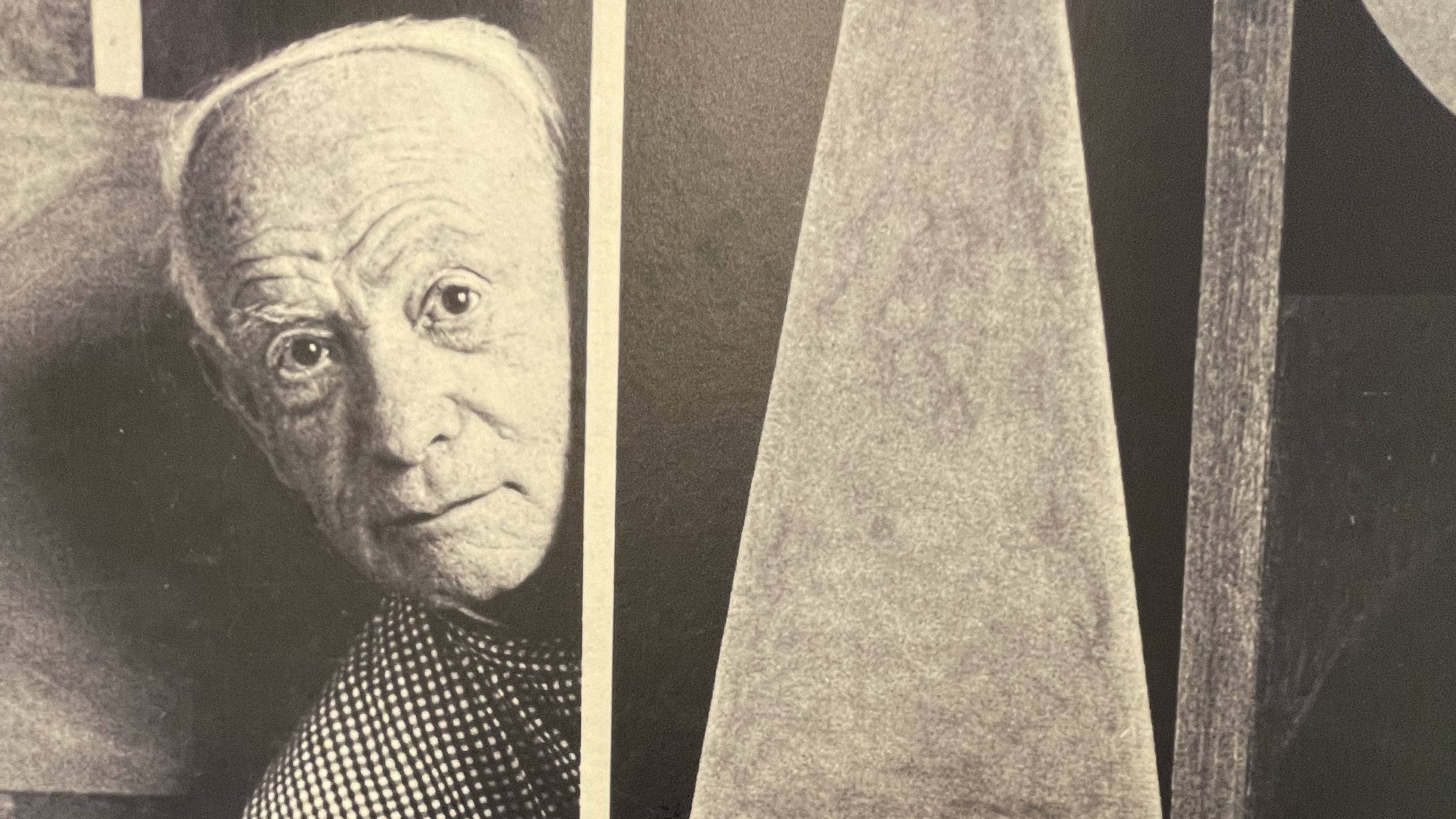
An Interview with John Monteith
John Monteith was born in 1973 in Newmarket, Ontario, Canada and is a graduate from Parsons The New School for Design’s MFA program in 2008. He has extensively traveled and lived throughout the world, which has influenced and changed his production practice over the years. His intricate and colourful pieces of wax and pigments on layered drafting film, as well as his painstakingly layered photo documentations, have made him a sought after and well-known abstract artist.
John Monteith has been internationally represented and the focus of several solo and group exhibitions, such as: “At Night All Cats Are Grey”, O’Born Contemporary, Toronto, ON; “Not Yet Titled”, Galerie Wenger, Zurich, Switzerland; and “Vector Issue 5”, Schau Fenster, Raum für Kunst, Berlin, Germany. His works are parts of permanent collections at The New School, Manhattan, New York; BNY Melon, New York; and Morris and Associates in London, England. IdeelArt had the pleasure to interview the artist to discuss his working process and upcoming projects.
Which materials and techniques do you use in your working process? How has your practice changed over time?
In my earlier painting practice, I was using oil on canvas and working representationally, making large-scale figurative paintings. Since 2005, I’ve made a significant shift in terms of medium and subject matter. The trajectory of my work developed naturally along with my thoughts, not only about urban spaces but also personal relationships and multiple layers of relation. I’ve always been fascinated by what characterizes the shown and the hidden.
In 2006, I began working with drafting film, using its translucent qualities to layer images together. While still working representationally, I would use oil paint, which was thinned to take advantage of its transparent nature. I was painting architecture, and urban centres, places I had visited that had historic significance, and even the remnants of an old car crash I saw in a forest in Kyoto, Japan that involved a couple of cars running off a steep road maybe fifteen years ago or so. Each of these scenes were once or currently places of rupture. In creating the paintings from this series I would paint each image twice on two different sheets of drafting film and then place the sheets one on top of the other, and shift the registry so that the top painting would be slightly offset from the bottom painting, which were then layered to create one image. Combining these two “parts” into one painting created a work that lingered within an enigmatic zone of flux, in a sense, a motion caught in time. After exhibiting these paintings alongside a suite of text based works, I became more reductive in my art making, taking a Concrete approach to making my drawings and paintings, which maintained a reference to the temporal within the urban sphere, and a memory/history discourse as forwarded by writers such as Andreas Huyssen.
In 2011, I began the (de) Construction/(re) Construction series, which were created from photo documentation of interstitial spaces such as the doorways and hallways, of shopping malls, airport terminals and other public spaces. I made these paintings by using the shapes of cast light and shadows present within these “junk spaces,” a term coined and written about by Rem Koolhaas. These are “no place” places where we spend much of our time in transit moving from Point A to Point B. As with my last group of paintings, I used the same strategy of painting two identical layers, but this time when I placed the layers together I would shift them into the desired position before finishing the painting, pulling out and pushing back certain elements.
In completing these paintings, I mounted them to opaque white plexi-glass, hand-cut to the dimensions of each painting. This allowed me to hang the pieces on the wall as you would a traditional painting, but alternatively to think of the paintings sculpturally by hanging each piece on its own stand. Installing the work this way created new physical relationships between the works while referencing the architecture of the gallery and altering the “one to one” sightline of viewing, thus changing the nature of ones experience of the paintings. My works take on different associations in this way. I’ve always been interested in layering, but I’m also interested in using one material to reference another, in this case my paintings installed as sculptures. Different paintings might look like drawings, and photographs and drawings may look like paintings. Each step in my creative process manifests itself visually in the final work; the traces are always legible. For me, this is where the content lies. In our cities, this scenario plays out as we look for evidence and traces of the past, hidden within the veneer of the present.
I spent the last two years in Berlin, creating drawings that grew organically as opposed to my past use of photographic references. I was particularly looking at the reconstruction of the city, its topography and also the “voids” of the city that maintain traces of the past. From this research, I created interconnecting groups of drawings that inform each other when viewed in concert, as well as work that considered the architectural reconstruction happening within the city center.
How long does a work usually take?
It really depends. When I was in Berlin, I’d usually be in my studio six days a week. It’s difficult to say how long a work will take, as I tend to work on multiple pieces at once. In my process, I start off with very thin paint and then slowly build it up or in the case of my drawings, I would often spend a couple of weeks making tests before finalizing my approach to the work. Basically my process is a slow labour intensive one.
What is integral to your work?
My practice has taken me to many cities, both to live and for research. Each time I relocate, it influences and changes my work. These places are catalysts to the ways in which I think about making art and how I execute my process. New ways of thinking and making emerge as past habits get broken and shaken up.
How do you know when a work is finished?
I don’t really work in such a nebulous manner; it’s clearer to me. There’s never been a question of what I need to do next in order to resolve a work. The biggest question for me is how do I place each piece contextually with other pieces in the show, and how is the work to be installed? These are always the most difficult questions as I consider how my work will be read and how the exhibition space will influence this legibility. While working with my chosen material, framing is also a consideration. Framing can either make or break my work. I like to work with framers I trust that can offer their insight and ideas.
What does having a physical space to make art in mean for your process, and how do you make your studio space work for you?
My studio needs to be a solitary and quiet space. I’m flexible with the location, but the studio space does dictate certain parameters, particularly in terms of scale and how large it’s possible to work. If you have a small space, a work is going to look much larger in your studio than it will once it’s hanging on the walls of a large gallery.
Is there something that you are currently working on, or are excited about starting that you can tell me about?
Currently, I am in Halifax, Canada, doing some research on fibre-based art practices for a new body of loom woven works. While in Berlin I became increasingly interested in augmenting my traditional practice and incorporating new mediums—I’ll still be painting, but just in a different way.
How do you navigate the art world?
I think the best way to deal with the pressures is to spend as much time in your studio as possible and keep making work. There’s a certain solace in the process of moving forward in ways that are challenging to you. I read different texts and art publications that are geared towards cultural theory and investigation rather than straight up exhibition reviews or articles devoted to the art market. It also helps to have my community around me—I have groups in Berlin, New York and Toronto— made up of artists, curators, writers, designers, musicians and djs who support my work as I support theirs. Engaging in conversation and just being present with them helps me tremendously to cope with the pressures of being an artist.
What’s the best piece of advice you’ve been given when you broke out into the art world? What advice do you have for young emerging artists?
The best advice I got was from Martha Rosler who said, “Never trust anybody with your career. You always have to keep an eye on how you are being represented, and how those representing you are framing the conversation around your work.”
Are you involved in an upcoming shows or events? Where and when?
I’ll be part of a group exhibition at Gallery Wenger in Zürich, Switzerland that opens October 24th 2015 through January 9th. I have a few other projects as well which are in the early stages of development.
Featured image: Memorial Day Installation O’Born Contemporary, Toronto 2012 - Courtesy of the artist






